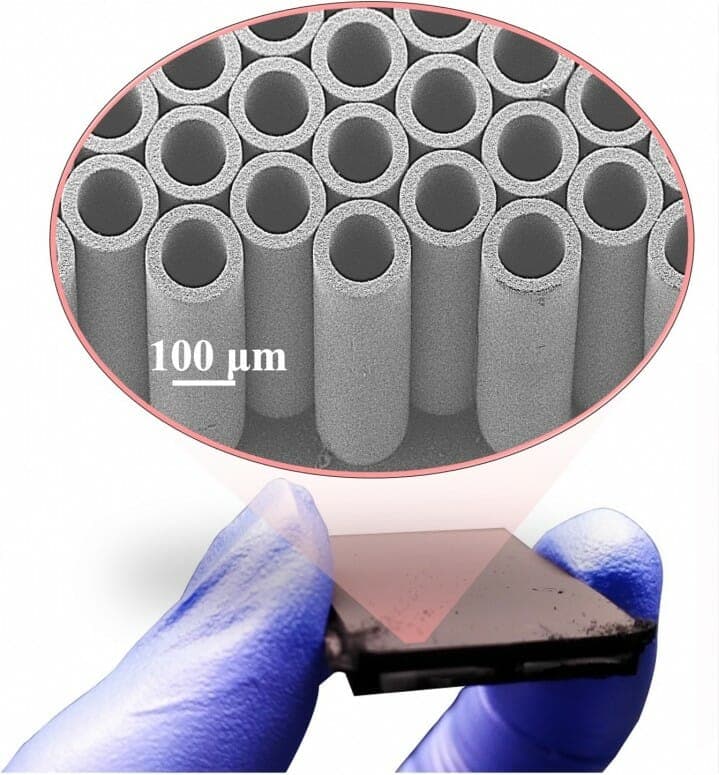Carbon nanotubes have found use in everything from heart-rate-monitoring shirts to smart bandages to more efficient solar cells. Now, scientists at the University of Wisconsin-Madison have used them in a helmet lining foam that offers better impact protection than conventional foams.
First of all, just what is a carbon nanotube? Putting it simply, it’s a sheet of graphene that has been rolled up into a tube. And what is graphene? It’s a one-atom-thick material made of carbon atoms that are linked together in a honeycomb pattern. Among its various other useful qualities, graphene is the strongest of all known materials.
The new lightweight “ultra-shock-absorbing” helmet lining foam consists of numerous micrometer-scale hollow cylindrical structures, the walls of which are composed of carbon nanotubes. The cylinders are vertically aligned relative to one another, plus the nanotubes that make up their walls are also vertically aligned.

Ramathasan Thevamaran
The shock-absorbing qualities of the foam are very much influenced by factors such as the inner diameter of the cylinders, their wall thickness, and the size of the gaps between adjacent cylinders.
After experimenting with 60 different combinations of these parameters, the researchers arrived at one configuration that worked the best. The resulting foam is claimed to exhibit 18 times higher specific energy absorption than the foam currently used in US military combat helmets, plus it’s stronger and stiffer. As an added bonus, the material retains those qualities even at very high and very low temperatures.
The scientists are now partnering with helmet manufacturer Team Wendy to test a prototype helmet liner made of the foam, in real-world scenarios.
“This new material holds tremendous potential for energy absorption and thus impact mitigation, which in turn should significantly lower the likelihood of brain injury,” said the lead scientist, Prof. Ramathasan Thevamaran.
The research is described in a paper that was recently published in the journal Extreme Mechanics Letters.
Source: University of Wisconsin-Madison
Source of Article